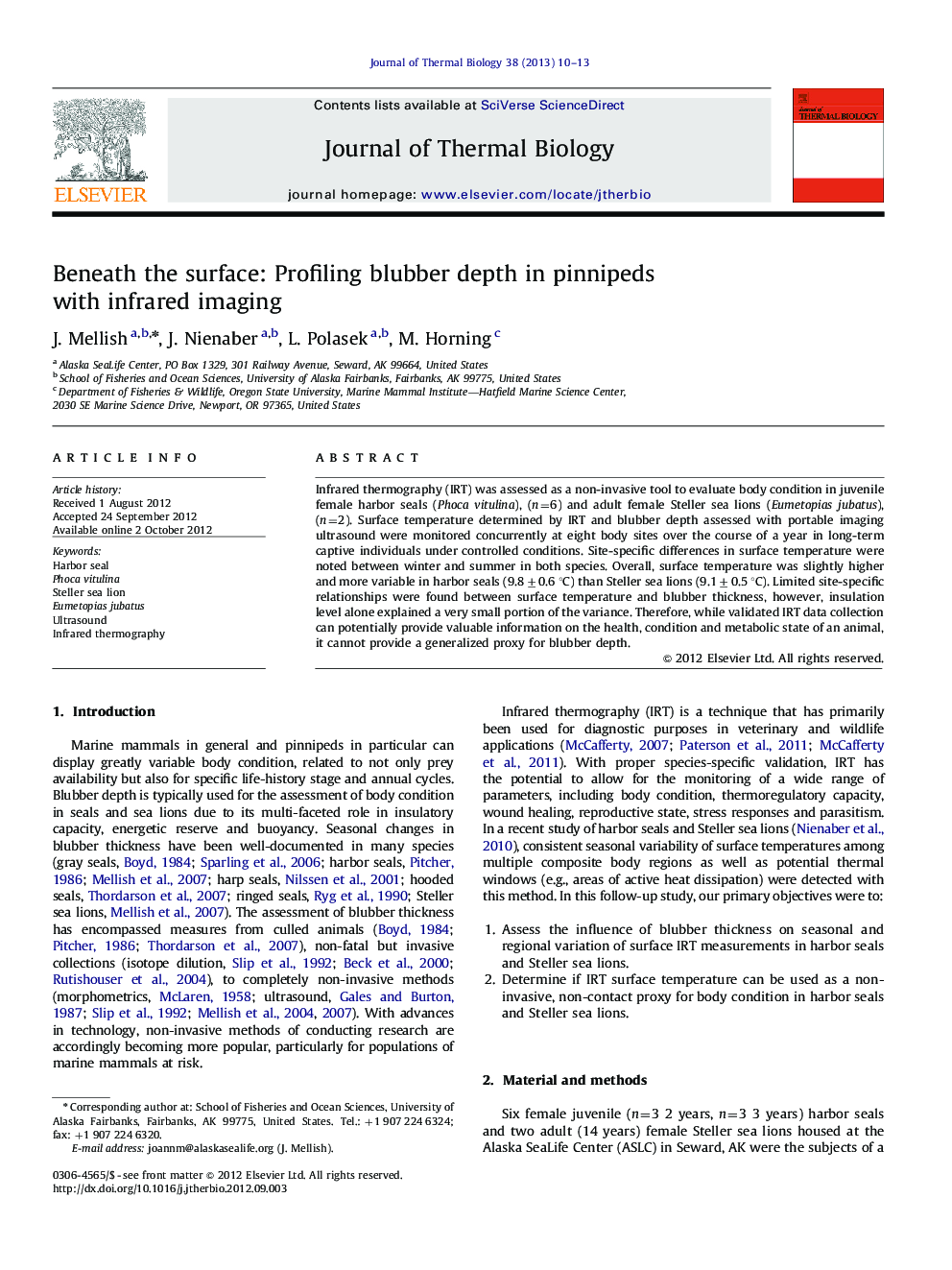| Article ID | Journal | Published Year | Pages | File Type |
|---|---|---|---|---|
| 2843049 | Journal of Thermal Biology | 2013 | 4 Pages |
Infrared thermography (IRT) was assessed as a non-invasive tool to evaluate body condition in juvenile female harbor seals (Phoca vitulina), (n=6) and adult female Steller sea lions (Eumetopias jubatus), (n=2). Surface temperature determined by IRT and blubber depth assessed with portable imaging ultrasound were monitored concurrently at eight body sites over the course of a year in long-term captive individuals under controlled conditions. Site-specific differences in surface temperature were noted between winter and summer in both species. Overall, surface temperature was slightly higher and more variable in harbor seals (9.8±0.6 °C) than Steller sea lions (9.1±0.5 °C). Limited site-specific relationships were found between surface temperature and blubber thickness, however, insulation level alone explained a very small portion of the variance. Therefore, while validated IRT data collection can potentially provide valuable information on the health, condition and metabolic state of an animal, it cannot provide a generalized proxy for blubber depth.
► We compared infrared surface profiles to blubber depth in seals and sea lions. ► Site specific differences were noted between season and species. ► Relationships of IRT profiles and ultrasound blubber depth varied by body location. ► Overall, insulation level alone was not a good predictor of IRT profile.
